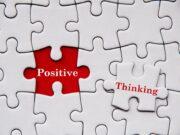Do you ever find yourself struggling to retain information, organise your thoughts efficiently, or comprehend complex concepts? Don't worry; you're not alone. Many individuals face similar challenges in their personal and professional lives. Thankfully, there is an exceptional tool available to assist you in overcoming these obstacles: mind mapping. In this extensive blog post, we will delve into the numerous benefits of mind mapping and examine how this visual technique can revolutionise your learning and memory capabilities.
Mind mapping is a creative, innovative method that enables you to visually organise information in a manner that closely mimics the way your brain processes and stores data. Developed by Tony Buzan in the 1970s, mind mapping involves establishing a central idea or topic, then branching out into related sub-topics. To represent connections between ideas, you use lines, symbols, colours, and images. This visual representation facilitates a more natural assimilation and recall of information.
The Advantages of Mind Mapping
Enhancing Learning and Memory Retention
By crafting a visual representation of information, you can gain a better grasp of intricate concepts and commit them to memory more effectively. The visual elements within mind maps, such as colours and images, actively stimulate your brain and aid in the recall process.
Fostering Creativity and Problem-Solving Skills
Mind mapping encourages you to explore ideas and think laterally. By visualising connections between seemingly unrelated concepts, you can generate new insights and devise innovative solutions to problems. The process of constructing a mind map can also serve as a brainstorming session, leading to a more extensive array of ideas and a more profound understanding of the subject matter.
Streamlining Planning and Organisation
Whether you're planning a project or organising your thoughts for an essay, mind mapping can help you deconstruct intricate tasks into manageable steps. By visually mapping out your ideas, you can pinpoint the critical aspects of a project, establish priorities, and allocate resources more efficiently. This leads to more effective planning and organisation, ultimately saving you time and effort.
Boosting Focus and Concentration
Working on a mind map requires your full engagement, which can help improve your focus and concentration. Mind mapping necessitates active participation, as you are continuously processing information, forming connections, and organising your thoughts. This leads to a more profound understanding of the material, enabling you to remain focused and concentrate on the task at hand.
Facilitating Effective Communication
Mind maps can function as a potent communication tool, allowing you to share complex ideas and information in a clear, concise, and visually appealing manner. By presenting information in a structured and easily digestible format, you can ensure that your audience grasps the key concepts and retains the information you are sharing.
Creating an Effective Mind Map: A Step-by-Step Guide
Now that you're aware of the benefits of mind mapping, let's explore the steps to creating an effective one:
Begin with a Central Idea or Topic
First, identify the central idea or topic you wish to explore. Write it down in the centre of your page or canvas and draw a circle or any shape around it. This central idea serves as the foundation for your mind map, and all other elements will branch out from it.
Introduce Major Sub-topics
Consider the primary sub-topics or themes related to your central idea. These should constitute the main branches that extend from your central topic. Write each sub-topic on a separate line or curve branching out from the centre and use different colours to distinguish them.
Incorporate Supporting Details
For each of your major sub-topics, consider the supporting details, such as facts, examples, or ideas. Draw smaller branches extending from the main branches and add these details. Use colours, symbols, or images to make these elements visually distinct and memorable. Remember to keep the information concise and focused.
Establish Connections and Cross-links
As you continue building your mind map, search for connections between different sub-topics and supporting details. Draw lines or arrows between these related elements to indicate their relationship. Creating cross-links can help you identify patterns, uncover new insights, and deepen your understanding of the subject matter.
Review and Refine Your Mind Map
Once you've incorporated all the relevant information into your mind map, take a step back and review it. Look for any gaps in your understanding or areas that need further exploration. Refine your mind map by adding, removing, or reorganising information as needed. This process of reviewing and refining can enhance your learning and help solidify the information in your memory.
Expert Tips for Effective Mind Mapping
To make the most of your mind mapping experience, consider the following expert tips:
Harness the Power of Colours and Images
Incorporate a variety of colours, symbols, and images in your mind map to stimulate your brain and make the information more memorable. This not only adds visual appeal to your mind map but also aids in the recall process.
Embrace Simplicity and Avoid Clutter
Refrain from overcrowding your mind map with excessive text or details. Concentrate on the essential information and keep your ideas concise. A cluttered mind map can be overwhelming and counterproductive.
Personalise Your Mind Map
Your mind map should reflect your unique thought process and learning style. Feel free to experiment with different layouts, shapes, and colours that resonate with you. There is no right or wrong way to create a mind map, so find what works best for you.
Utilise Mind Mapping Software
While hand-drawn mind maps can offer an enjoyable and tactile experience, you might also consider using mind mapping software or apps. These digital tools provide additional features and flexibility, such as easy editing, collaboration, and cloud storage. Some popular mind mapping tools include XMind, MindMeister, and Ayoa.
Practise Regularly and Be Patient

Developing effective mind mapping skills takes time and practise. Be patient with yourself as you learn and experiment with various techniques. As you become more proficient, you will begin to see significant improvements in your learning and memory capabilities.
Putting Your Mind Map to Use
Once you have created a comprehensive mind map, it's time to put it to use in various aspects of your personal and professional lives. In this section, we will discuss several practical applications of your mind map, demonstrating its versatility and effectiveness in various contexts.
Goal Setting and Personal Development
By visually mapping out your aspirations and the steps required to achieve them, you can develop a clear plan of action and monitor your progress. Additionally, mind maps can help you identify your strengths, weaknesses, and areas for improvement, aiding in your overall personal development.
Project Planning and Management
Mind maps can simplify project planning by providing a visual overview of the project's scope, objectives, and milestones. By outlining each task, its dependencies, and the resources needed, you can allocate your time and resources more efficiently and ensure smoother project execution.
Study and Learning
By visually organising information, you can improve your comprehension of complex subjects and identify connections between topics. Additionally, mind maps can serve as effective study aids, allowing you to review material more efficiently and commit it to memory more effectively.
Problem Solving and Decision Making
When faced with complex problems or decisions, mind maps can help you break down the issue into manageable components and evaluate possible solutions. By visually outlining the pros and cons of each option, you can make more informed decisions and develop well-considered solutions to your challenges.
Presentation and Communication
By organising your content in a structured format, you can ensure that your audience follows your train of thought and comprehends the key concepts. Additionally, mind maps can be used as a visual aid during presentations, helping you stay on track and deliver your message effectively.
Collaborative Brainstorming and Teamwork
Mind mapping is not limited to individual use; it can also be a powerful collaborative tool. By using a shared digital mind mapping platform, you and your team can work together to generate ideas, plan projects, and solve problems. This collaborative approach fosters open communication and ensures that everyone's perspectives are considered, leading to more innovative and well-rounded solutions.
By putting your mind map to use in various aspects of your life, you can leverage its full potential and reap the numerous benefits it offers.
Using Your Mind Map for Brainstorming
Brainstorming is a creative process that involves generating a plethora of ideas to address a specific problem or challenge. Mind maps can facilitate brainstorming by providing a structured, visual approach to ideation.
Define Your Central Problem or Goal
Before you begin brainstorming, clearly define the central problem or goal you wish to address. This should be the focal point of your mind map, serving as the starting point from which all other ideas will stem. By clearly stating the problem or goal, you create a solid foundation for your brainstorming session and ensure that your ideas remain focused and relevant.
Generate Ideas Freely
During the brainstorming phase, allow yourself to generate ideas freely and without judgement. At this stage, focus on quantity rather than quality. Write down any ideas that come to mind, even if they seem far-fetched or unrelated to your central problem or goal. The purpose of brainstorming is to explore all possibilities and encourage creative thinking, so don't limit yourself at this stage.
Use Visual Elements and Keywords
When adding ideas to your mind map, use visual elements and keywords to represent each concept. This can help you remember ideas more easily and stimulate your brain to generate additional ideas. Visual elements such as colours, images, and symbols can evoke emotions, trigger memories, and inspire creativity, making them invaluable assets during the brainstorming process.
Categorise and Connect Ideas
As your mind map begins to fill with ideas, look for patterns or themes that emerge. Group similar ideas together and create connections between related concepts. This categorisation and connection process can help you identify trends, reveal hidden relationships between ideas, and spark new insights that may have been overlooked.
Refine and Evaluate Ideas
Once you have generated a substantial number of ideas, it's time to review and evaluate them. Consider the feasibility, relevance, and potential impact of each idea in relation to your central problem or goal. Eliminate ideas that don't fit the criteria or seem less promising, and focus on those with the most potential. At this stage, you can also combine or expand on ideas to create more refined solutions.
Prioritise and Take Action
After refining and evaluating your ideas, prioritise them based on their potential impact, feasibility, and alignment with your central problem or goal. Identify the most promising ideas and develop an action plan for implementing them. By using your mind map as a guide, you can ensure that your brainstorming session results in tangible, actionable solutions.
By defining a clear problem or goal, generating ideas freely, using visual elements and keywords, categorising and connecting ideas, refining and evaluating them, and prioritising and taking action, you can maximise the creative potential of your mind map and develop innovative solutions to address your challenges.
Using Mind Maps to Enhance Creativity
Creativity is a valuable asset in both personal and professional contexts, and mind mapping can be an effective technique for unlocking your creative potential. In this section, we will explore various ways to utilise mind maps to enhance your creativity, stimulate innovative thinking, and generate new ideas.
Brainstorming and Idea Generation
As previously discussed, mind maps are excellent tools for brainstorming and generating ideas. By visually representing your thoughts and encouraging the free flow of ideas, mind maps stimulate your brain and promote creative thinking. The non-linear structure of mind maps also facilitates the exploration of different perspectives and fosters a more comprehensive understanding of the subject matter.
Identifying Connections and Patterns
One of the key benefits of mind mapping is its ability to reveal connections and patterns between seemingly unrelated concepts. By visually linking ideas, you can identify new relationships and uncover fresh insights, which can inspire innovative solutions and creative approaches to problem-solving.
Encouraging Divergent Thinking
Mind mapping fosters divergent thinking, a process that involves generating multiple, unique solutions to a problem or challenge. By exploring various possibilities and expanding upon existing ideas, you can develop a diverse array of potential solutions, increasing your chances of discovering creative and unconventional approaches.
Combining and Integrating Ideas
Mind maps provide a platform for combining and integrating different ideas, which can lead to the creation of new, original concepts. By merging elements from various sources or combining ideas from different branches of your mind map, you can generate unique solutions and stimulate your creative thinking.
Using Visual Elements to Stimulate Creativity
The inclusion of visual elements such as colours, symbols, and images in your mind map can have a significant impact on your creativity. These visual cues can evoke emotions, trigger memories, and inspire new ideas, helping you to think more creatively and approach problems from different angles.
Collaborative Creativity
As mentioned earlier, mind maps can also be used as a collaborative tool, enabling you and your team to work together to generate ideas and develop creative solutions. By sharing your mind maps with others and combining your collective knowledge and perspectives, you can foster a more creative and innovative working environment.
By utilising mind maps in these various ways, you can significantly enhance your creativity and unlock your full creative potential. Whether you're generating ideas, identifying connections, fostering divergent thinking, combining ideas, using visual elements, or collaborating with others, mind mapping can be a powerful technique for stimulating your creative thinking and achieving greater success in your personal and professional endeavours.
How to Study a Mind Map for a Deeper Understanding
Studying a mind map effectively can significantly enhance your comprehension of complex subjects and facilitate a deeper understanding of the material. In this section, we will discuss various strategies for studying a mind map to maximise its potential as a learning tool and improve your retention of the information.
Start with the Central Concept

When studying a mind map, begin by focusing on the central concept. This serves as the foundation for your understanding, and it is essential to grasp this core idea before delving into the details. Take a few moments to reflect on the central concept and consider its significance in relation to the subject matter.
Trace the Main Branches
Next, explore the main branches of your mind map, which represent the key sub-topics or themes related to the central concept. As you move along each branch, consider how the sub-topics contribute to your overall understanding of the subject. This process helps you establish a mental framework for organising the information and identifying the most important aspects.
Examine the Supporting Details
Once you have a solid grasp of the main branches, delve into the supporting details, such as facts, examples, or ideas. Focus on each of these elements and consider their relevance to the sub-topics and central concept. By studying the supporting details in context, you can deepen your understanding of the material and enhance your retention of the information.
Identify Connections and Patterns
As you study your mind map, pay attention to the connections and patterns that emerge between different sub-topics and supporting details. These relationships can provide valuable insights and help you develop a more comprehensive understanding of the subject matter. Look for cross-links or arrows that indicate connections and reflect on their significance.
Use Active Recall and Testing
To improve your retention of the information, use active recall and testing techniques while studying your mind map. Active recall involves retrieving information from memory without referring to the source material. Test yourself by attempting to recall the main branches, supporting details, and connections within your mind map. This process strengthens your memory and reinforces your understanding of the material.
Review and Revise Regularly
To maintain a deep understanding of the subject matter, review and revise your mind map regularly. This process helps to solidify the information in your long-term memory and ensures that you retain a comprehensive grasp of the material. Schedule periodic review sessions and consider updating your mind map with new information or insights as your understanding evolves.
Best Alternative Techniques to Mind Mapping for Decision Making, Creativity, and Brainstorming
While mind mapping is an effective tool for decision-making, creativity, and brainstorming, there are alternative techniques that can be equally beneficial in these areas. In this section, we will explore some of the best alternative methods to mind mapping specifically for decision-making, fostering creativity, and generating ideas.
SWOT Analysis
SWOT analysis is a strategic planning tool that involves identifying the strengths, weaknesses, opportunities, and threats related to a specific goal or decision. By evaluating these factors, you can gain valuable insights into the feasibility of various options and develop well-informed strategies for achieving your objectives.
Six Thinking Hats
Edward de Bono created the Six Thinking Hats method as a way to encourage original thinking and problem-solving in group settings. The technique involves assigning different roles or ‘hats' to participants, which represent distinct ways of thinking, such as analytical, creative, or emotional. By encouraging diverse perspectives, the Six Thinking Hats method can stimulate innovative ideas and promote effective decision making.
SCAMPER
SCAMPER is a creative thinking tool that involves using a series of prompts to generate new ideas or improve existing ones. The acronym stands for Substitute, Combine, Adapt, Modify, Put to another use, Eliminate, and Reverse. By systematically applying these prompts to a concept or problem, you can explore new possibilities and generate innovative solutions.
Affinity Diagramming
Affinity diagramming is a collaborative brainstorming technique that involves organising ideas or issues into related groups or themes. By categorising and connecting ideas, affinity diagramming can help reveal patterns, uncover hidden relationships, and stimulate creative thinking. This method is particularly effective for analysing complex problems or synthesising large amounts of information.
Decision Matrix
A decision matrix is a tool for evaluating and comparing multiple options based on specific criteria or factors. By assigning weights and scores to each criterion for each option, you can calculate a total score for each choice and identify the most favourable option. Decision matrices can be useful for making informed decisions, especially when multiple factors are involved.
Brainwriting
Brainwriting is a variation of brainstorming that involves having participants write down their ideas on paper or index cards rather than sharing them aloud. This method can encourage more equal participation and minimise the influence of dominant personalities, leading to a more diverse range of ideas and perspectives.
The 5 Whys
The 5 Whys technique is a problem-solving method that involves asking ‘why' five times to explore the root cause of an issue or challenge. By repeatedly questioning the reasons behind a problem, you can gain a deeper understanding of the underlying factors and develop more targeted solutions.
Best Alternative Techniques to Mind Mapping for Learning and Understanding
While mind mapping is a powerful technique for enhancing learning and understanding, there are other methods that can also help you grasp complex information and retain it effectively. In this section, we will discuss some of the best alternative techniques to mind mapping for learning and understanding.
The SQ3R Method
The SQ3R method is a structured approach to reading and learning that involves five steps: Survey, Question, Read, Recite, and Review. By following this method, you can actively engage with the material, identify the main points, and reinforce your understanding of the content.
Dual Coding
Dual coding is a learning strategy that involves combining verbal and visual information to enhance understanding and memory. By incorporating both textual and visual elements, such as diagrams, illustrations, or symbols, you can create stronger mental connections and improve your retention of the material.
Chunking
Chunking is a technique that involves breaking down complex information into smaller, more manageable units, or ‘chunks'. By organising information in this way, you can reduce cognitive load, enhance your understanding of the material, and improve your memory.
Self-explanation
Self-explanation is a learning strategy that involves explaining concepts or processes to yourself as you study. By verbalising your understanding of the material and identifying any gaps in your knowledge, you can deepen your comprehension and reinforce your learning.
The Leitner System
The Leitner System is a flashcard-based method that employs the principles of spaced repetition to improve learning and retention. By organising flashcards into different ‘boxes' based on your mastery of the material, you can schedule review sessions at optimal intervals, ensuring that information is committed to long-term memory.
Mindfulness and Focused Attention
Incorporating mindfulness and focused attention techniques into your learning process can help improve your concentration, reduce distractions, and enhance your understanding of the material. By practising mindfulness, you can develop greater awareness of your thoughts and emotions, allowing you to maintain focus and engage more deeply with the content.
Collaborative Learning
Collaborative learning involves working with others to acquire new knowledge and skills. By sharing your understanding, asking questions, and discussing ideas with peers, you can gain new perspectives, clarify your thinking, and deepen your comprehension of the material.
By exploring these alternative techniques to mind mapping for learning and understanding, you can discover new methods that may be more suitable for your unique learning style or preferences.
Best Software and Apps for Mind Mapping
In today's digital age, there is an abundance of software and apps available to help you create, edit, and share mind maps. These tools offer a wide range of features and functionalities that can streamline the mind mapping process and enhance your productivity. In this section, we will discuss some of the best software and apps for mind mapping, suitable for various platforms and devices.
XMind
XMind is a popular mind mapping software that offers a user-friendly interface and a range of powerful features, including various templates, export options, and collaboration capabilities. Available for Windows, macOS, and Linux, XMind allows you to create visually appealing mind maps, organise information effectively, and share your work with others.
MindMeister
MindMeister is a cloud-based mind mapping tool that enables you to create, edit, and share mind maps from any device with internet access. With its intuitive interface and real-time collaboration features, MindMeister is ideal for brainstorming, planning, and organising ideas with colleagues or friends. The platform also integrates with other popular productivity tools, such as Trello and Google Drive.
Coggle
Coggle is a web-based mind mapping application that offers a simple and clean interface for creating and sharing mind maps. With its drag-and-drop functionality and real-time collaboration features, Coggle is perfect for both individual and team use. The platform also allows you to export your mind maps in various formats, such as PDF or image files.
MindNode
MindNode is a macOS and iOS-exclusive mind mapping app that boasts a sleek design and seamless integration with Apple devices. With its easy-to-use interface, powerful features, and iCloud syncing capabilities, MindNode is an excellent choice for Apple users looking for a dedicated mind mapping solution.
Ayoa (formerly iMindMap)
Ayoa, developed by the creator of the mind mapping technique, Tony Buzan, offers a comprehensive toolset for creating, organising, and sharing mind maps. Available for Windows, macOS, iOS, and Android, Ayoa includes various templates, presentation options, and project management features, making it a versatile solution for a wide range of tasks.
Miro
Miro is an online collaborative whiteboard platform that allows you to create mind maps, flowcharts, and other visualisations. With its real-time collaboration features and integration with popular productivity tools, such as Slack and Google Workspace, Miro is an excellent choice for remote teams or individuals seeking a flexible and powerful mind mapping solution.
SimpleMind
SimpleMind is a cross-platform mind mapping app that offers a straightforward and intuitive interface, perfect for beginners or those seeking a no-frills solution. Available for Windows, macOS, iOS, and Android, SimpleMind allows you to create customisable mind maps, organise your ideas with ease, and export your work in various formats.
Conclusion
Mind mapping is a powerful visual tool that can significantly enhance your learning and memory capabilities. By organising information in a way that mirrors your brain's natural processes, you can improve your understanding, boost your creativity, and communicate more effectively. So, why not give mind mapping a try? You might be surprised at the positive impact it can have on your personal and professional lives.
More Posts for Creative Productivity
 | Steve Cato is a PhD-level scientist who brings a strong scientific perspective to the study of mind improvement. |
Semantically Related Posts
You might also want to explore free trials or freemium versions of the software to test their features and usability before committing to a purchase. By thoroughly evaluating your needs and preferences, you can choose the mind mapping tool that best suits your requirements and enhances your overall productivity.
As you become more familiar with mind mapping, experiment with different techniques and styles to find the approach that works best for you. Additionally, consider using digital mind mapping tools to streamline your workflow and make your mind maps more accessible and shareable.
By consistently integrating mind mapping into your routine and refining your techniques, you can unlock its full potential for enhancing your learning, productivity, and creativity.
 | The Science of Grounding: Techniques for Managing Anxiety and Stress | Practical Tips for a Great Life Using Positivity |  |









